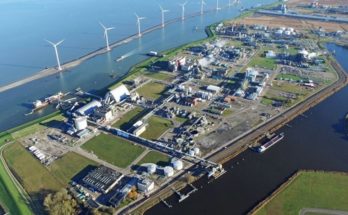Neutrinovoltaic – emission-free decentralized energy generation.
The photovoltaic concept, which began in space flight, has now established itself as a viable form of energy generation across the world. Until date, the most significant drawback of solar cells has been their substantial yield swings between winter and summer months. Although traditional photovoltaic systems continue to create power even when it is cloudy or during the dark season, the quantity produced in winter is only one-third of the energy produced by solar radiation during the summer months. As a result, the generation of power using solar cells is highly dependent on the time of year.
The notion of neutrinovoltaics has been proposed by physicists as a viable complement to the standard solar cell. Instead of visible solar radiation, this employs so-called cosmic radiation, a phrase that encompasses all non-visible radiation spectrum, including known and undiscovered regions, elementary particles, as well as man-made electrosmog. This is made feasible by neutrinos, which transform a small portion of their kinetic energy into direct current when they collide with a particular nano-surface. As a result, energy is gathered from the environment.
From the Nobel Prize to the generation of energy
Neutrinos are basic cosmic particles that bombard the Earth in a continuous stream of particles. They can, in general, pierce stuff without leaving a trace and can move through our bodies without being interrupted. They are, nonetheless, thought to play an important part in biochemical processes. Until 2015, neutrinos were assumed to be massless, which made them irrelevant for energy generation. This drastically changed with the awarding of the Nobel Prize in Physics in 2015. With the use of novel measuring methods, Canadian Arthur McDonald and Japanese researcher Takaaki Kajita succeeded in demonstrating the mass of neutrinos. This new discovery, along with the fact that neutrinos are nearly everywhere and constantly influencing our world, made it a foregone conclusion that the high-energy particles may be effective in transforming them into power.
How may neutrinos be used to generate energy?
Neutrino photovoltaics converts motion into energy in the same way as wind power does. Similarly to wind, whose kinetic energy is employed to drive the rotors but is not “caught,” neutrinos set an incredibly dense surface into atomic oscillations by their impact. The atomic vibrations induced by neutrinos are amplified into resonances on many layers using a specific substance. The challenge now was to create a material thick enough to slow down the neutrinos’ passage and put them into micro-vibrations using flawless geometry.
International physicists and materials scientists from several institutions, led by CEO Holger Thorsten Schubart, have succeeded in optimizing materials that match these specifications.
Metamaterial is the technical word for this. In neutrinovoltaics, this specifically relates to doped graphene and silicon. Graphene and silicon are alternatively deposited in nanoscale layers to a carrier surface. When radiation strikes this layer, the graphene molecules begin to vibrate vertically, whereas the silicon particles begin to oscillate horizontally. When the layers are overlaid, a horizontal motion resonance arises, which is communicated to the current-carrying substrate. In this case, the coated side of the carrier acts as a positive pole, while the untreated side acts as a negative pole. Under laboratory settings, the sustained power achieved thus far with such a high-density coated aluminum foil the size of a DIN A-4 sheet is 2.5-3.0 watts, depending on the radiation intensity.
Neutrino Energy’s Potential Future Applications
The benefit of neutrinovoltaic energy generation over solar radiation energy generation is that cosmic rays are not only present all the time and everywhere, but they can also work in the dark without the need for light sources. Using this invisible radiation implies having an infinite, carbon-free, and perpetually renewed source of energy. To emphasize the tremendous dimensions of neutrino energy, the daily potential of this radiation alone exceeds the whole accumulated energy amount that the planet still has to provide in the form of fossil fuels.
In light of climate change, international research into neutrino energy is currently moving at breakneck pace. In the initial stage, neutrinovoltaic energy will be used to power diodes and tiny electrical devices such as cell phones. Furthermore, in the future, electric vehicles might be fuelled by energy created by neutrino technology.
The objective of neutrino application research is to decentralize the whole energy supply in the future decades. This might soon render electricity lines and the energy loss caused by transportation obsolete. Energy would always be accessible exactly where it was required if power was generated locally.
Social ramifications
Neutrinovoltaics would very probably have far-reaching economic and social implications. These would have an impact on more than just energy corporations. Denzentralized power generation might herald a true revolution in energy supply. Geopolitical conflicts over the final fossil fuel deposits might be considerably minimized. However, bringing about this paradigm change is not just the responsibility of entrepreneurs, scientists, engineers, and technicians. Only with widespread acceptance and backing from politicians, the media, and the general people can the promising notion of a genuine green energy revolution be realized.





